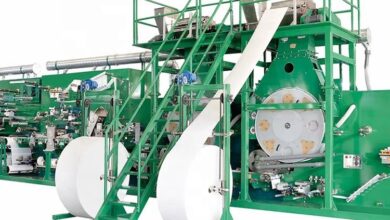SAP Testing in Large Scale Enterprises: Top 5 Best Practices
SAP Testing Best Practices
As the digital business landscape thrives, it becomes critical for organizations to not only remain operational but relevant and competitive. SAP has been one such technology provider offering unique, industry-specific, and scalable enterprise-level solutions for the perfect digital transformation. If your next goal is to deploy a holistic digital transformation strategy or if you are already a digital-first enterprise, overlooking SAP solutions is no longer a viable business decision.
In the past, enterprise-level systems were developed when business environments were characterized by relative stability and market trends took longer to emerge. This enabled a slow-paced strategic business landscape. As a result, these systems were heavily customized, monolithic IT landscapes that are no longer suitable for today’s rapidly changing business environment, nor can they keep up with future trends.
Acting upon this requirement for evolving enterprise-level solutions, SAP grabbed the opportunity to provide solutions uniquely focused on enabling a flexible, predictive, and responsive business environment. Majorly trusted by Fortune 500 enterprises, SAP has become a market leader in providing intelligent ERP systems, and other enterprise-level solutions (CRM, HCM, SCM, etc.) that accommodate for fast-paced large-scale change. However, deploying a company-wide system and ensuring that that system works as intended are completely different concerns.
When leveraging a new technology, customization can drive specific business results. Market-leading SAP solutions offer users the flexibility to build customizations into their systems alongside frequent updates to remain compliant and ahead of the competitor curve, raising new risks for failed implementation. So, you must ensure thorough testing of your products for intended performance and functionality.
This article offers a comprehensive look into the best practices of SAP testing for enterprises to ensure a seamless deployment and optimal effectiveness of your SAP solutions.
When Should You Test Your SAP Applications?
-
Customizations
WRICEFs (Workflow, Report, Interface, Conversion, Enhancement, and Forms) customizations include any type of custom development or enhancement offered by SAP. Since the default SAP suite features may not cater to the specific business needs of an organization, such customizations are common. It becomes highly necessary to test these customizations to ensure that they do not lead to any roadblocks after deployment.
-
Updates
It is inevitable for businesses to undergo updates, whether they utilize SAP S/4 HANA, which undergoes more frequent updates, or an SAP module. The frequency of these updates will vary based on the scale of the company and its processes. However, an update can sometimes hurt a business process. Therefore, it is essential to conduct SAP regression testing before releasing any new features to a production environment. Regression tests help to mitigate any potential issues that may arise.
-
Integrations
Each SAP module is designed to support a specific business process. However, a process can extend across different modules beyond SAP to a third-party application. It is crucial to test these integrations thoroughly to guarantee a smooth flow of information and uninterrupted operation of business processes.
SAP Testing Best Practices for Large-scale Enterprises
Production-like Test Data
The importance of production data is highlighted through the shortcomings presented in the usage of dummy data to run tests. If tests are run on synthesized data, the system might overlook the real-life errors that might emerge once the software goes live.
Production data offers real insights into system performance, enabling more holistic coverage through test cases. However, using only production data for testing might lead to several roadblocks (personal information, security concerns, a shortage of hypothetical test cases, etc.). Hence, using both kinds of data in moderation for testing your SAP solutions might lead to optimal test results.
SAP Automation Testing Opposed to Manual Testing
Test automation needs no introduction! Automation is bringing about a paradigm shift in the way businesses carry out their routine, repetitive tasks. Testing cycles are no exception. Testing cycles can consume a considerable amount of time and company resources if carried out manually. Test automation takes a major chunk of bulky and repetitive data from your hands and accelerates the software delivery time.
In essence, repetitive test scripts are automated so that testers don’t have to code every time the same test needs to run manually. And with the continuous release of newer features and updates, the need for delivering and updating applications faster with ensured quality becomes paramount. This allows for test automation to gain more ground in the testing cycle.
Move away from Risk-based Testing
Let’s assume that your SAP applications need an update to continue running smoothly. Once you integrate the upgrades, what do you test your new system for? Most stakeholders only believe in testing the necessary capabilities, or the new organizational areas the updates might affect.
However, risk-based testing may leave you short-sighted about the consequences of untested areas. As a holistic testing approach, positive and negative testing must be run to ensure intended application performance and to prevent the application from crashing if invalid input is fed to the system.
Shift Left Testing
Complexity goes hand-in-hand with SAP applications. Due to the customizable capabilities of SAP solutions, the depth and complexities of your specific SAP products increase. The shift-left approach moves the testing phase left or towards the initial phases of the implementation or development cycle. This means that testing happens alongside the development cycle as opposed to testing after the application is developed.
Incorporating shift-left methodology in SAP testing is especially beneficial since SAP solutions present complex challenges with each module and customization. So, testing elements as early as possible in the development cycle improves the feedback time and allows for the incorporation of fixes quickly.
Repository of Test Cases & Updates
It might prove helpful to remember the butterfly effect while testing. Even a small miss can lead to a big catastrophe by the time the testing cycle ends. With continuous updates changing the software landscape every couple of months, the need for accelerated and effective testing cycles is higher than ever, that is, even a small change can lead to heavy failures if not tested thoroughly.
So, it’s helpful to remember that no test scenario is truly useless, even if the results come back negative. Maintain thorough repositories of test cases and results so that unnecessary tests can be avoided, and useful tests can be repeated for better test coverage.
Conclusion
Growing with an expected CAGR of 7.9% by 2031, SAP is undoubtedly one of the major technology providers to pay mind to, especially for businesses focused on growth.
If you are leveraging SAP solutions, SAP testing is critical for business growth. It can reshape internal collaboration and empower customer engagement and automating SAP testing offers a competitive advantage with glitch-free systems. Building a foolproof SAP testing strategy is critical to delivering applications that meet or exceed customer expectations. One last critical aspect of building the perfect SAP strategy is to ensure that you leverage the right partners for this task. Ensure that your SAP partners inherit the resources and expertise you require for your project.



